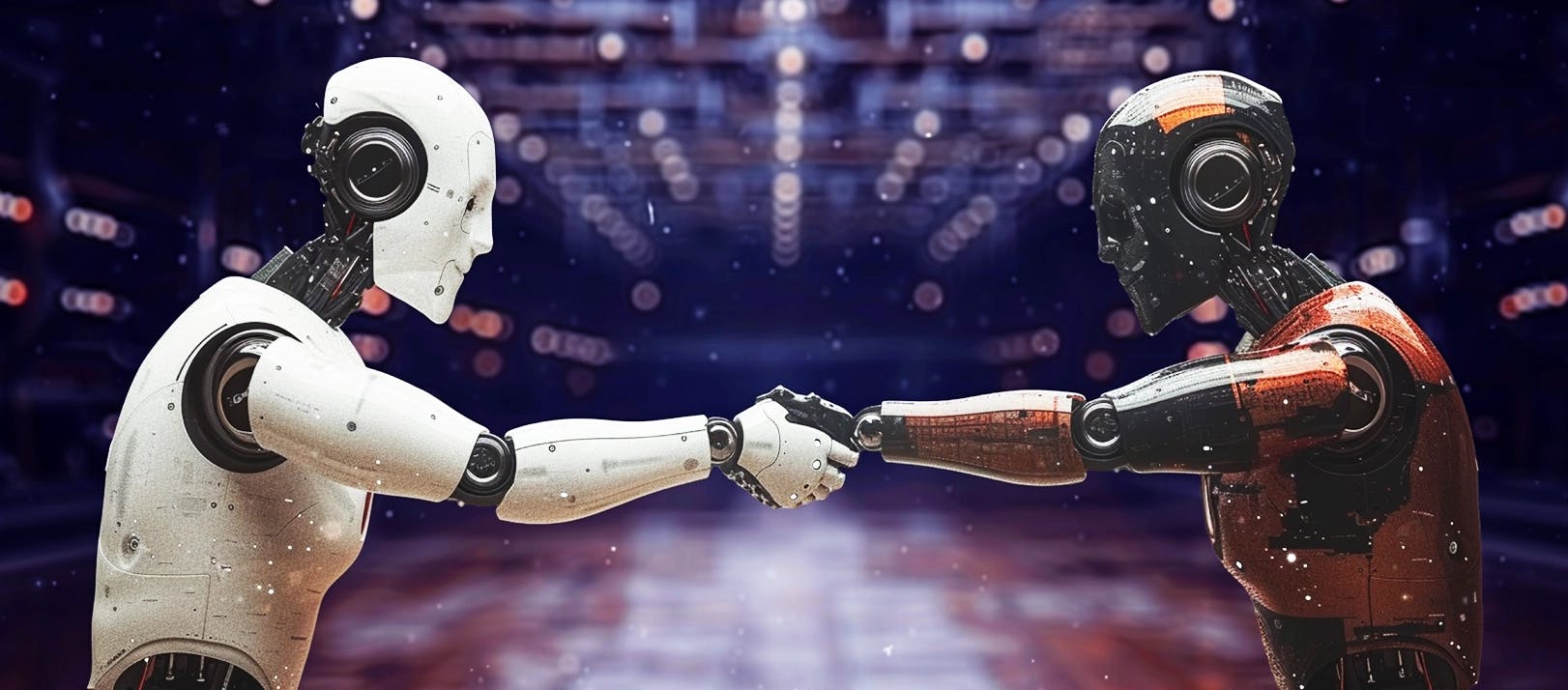
Debunking Myths: Can AI Voice Assistants Really Understand Customers?
AI-powered voice assistants are getting more and more crucial in business communication at present. As per Market US report, the AI Voice Agents market will grow to about USD 47.5 billion by the end of 2034, up from its 2024 mark of USD 2.4 billion. There has been a significant boost in the number of people being involved in different activities with AI voice agents. These AI voice assistants are getting used by companies of all sizes. They help businesses provide faster support and improve user experiences by making the process convenient.
However, people are still confused about the efficiency of these voice assistants in terms of understanding human beings. Are they capable of “getting” our words for real? Can they perceive emotions or various codes? Or may they be just repeating after others?
This blog offers a detailed explanation of the inner workings of AI voice assistants and debunks popular misconceptions. We will also explore the limitations and capabilities of these voice assistants in terms of understanding customers.
Understanding AI Voice Assistants
Core Functionality
Basically, AI voice assistants run on two fundamental technologies:
- Speech Recognition
It allows the virtual assistant to listen to and switch spoken words into text. - Natural Language Processing (NLP)
Natural language understanding in AI makes the voice assistant capable of getting to the point of what is being said by a person and reacting accordingly.
When you ask a question like “What’s the weather today?”, the assistant can understand your words, convert them to text, guess what you’re requesting, and then respond with formatted text. This might seem very simple, but it is really hard. The system has to cope with many kinds of tones of voice, speeds, and various ways of speaking.
Learning Mechanisms
AI assistants are constantly learning and improving as time goes by. They are driven by machine learning algorithms, therefore, they evolve by the data they obtain. Every time an assistant talks to you, he/she can learn something new. Like your preferences, your habits, or how you speak, and so on.
With the help of training data, machines can understand various languages, accents, and sentence structures. Furthermore, user feedback like pointing out errors or making a choice enhances the system's intelligence and learning abilities.
Looking for AI voice assistant understanding by experts?
Myths About AI Voice Assistants
Myth 1: AI Assistants Can’t Understand Human Emotions
Most people believe that Voice AI in customer service is not able to understand emotions, such as dissatisfaction, joy, or mockery.
Truth
Although AI has no understanding of human feelings, most of the currently running systems are already integrated with the sentiment analysis feature. These tools can identify the pitch of your voice or the choice of words to estimate your emotional state.
It can be seen as when you exclaim, "I'm quite mad at this service", the AI voice recognition technology would probably infer that the message is negative. As a next step, it would then be transferred to a human agent.
It's true that AI can't understand deep or complex emotions fully. They might not differentiate when someone is jokingly saying 'You're so bad!' and when someone is really mad. Although they can grasp superficial feelings, they are still not emotionally intelligent.
Myth 2: AI Misunderstands Different Accents
One more thing which is widely believed is that AI voice assistants have a hard time understanding those with non-native accents.
Truth
Voice assistants of today learn from many voice inputs, which are of different accents and languages. The latter, in turn, helps them to understand various kinds of speech.
Among these voice inputs, companies like Google and Amazon often apply updates to their systems to improve the support for different accents. Of course, they are far from perfect, though. Some accents or dialects may be more error-prone, particularly when the assistant hasn’t had similar voices trained.
On the other hand, voice assistants are getting more efficient at dealing with different types of speech. This means that they are more inclusive nowadays than ever before.
Myth 3: AI Is Limited to Pre-programmed Responses
Some people believe that AI assistants are only capable of providing responses that were already prepared by a developer.
Truth
In the current age of AI, many voice assistants possess the ability to generate specific contextual answers. So, when a person poses the question, 'Where's the closest cafe?', the AI agent will identify the user's whereabouts. It will also consider the customer's preferences as a basis to formulate a tailor-made answer.
Nevertheless, even artificial intelligence is unable to cope with quite extremely narrow and rare questions. When you pose an infrequent question, the chatbot might return an entirely incorrect or common answer. The reason is the assistant may not be in a position to have the proper background or knowledge to create a relevant response.
Can AI Really Understand Customers?
Strengths of AI Voice Assistants
AI voice assistants bring several useful features to the table in customer understanding. Some of the most important are:
- Handling Large Amounts of Data
They can analyze a customer's previous interactions, preferences, and questions to achieve more accurate responses. - Personalization
They can even remember your preferred settings, favorite services, or frequently asked questions, thus making your user experience more personalized. - 24/7 Availability
They are always available and can be of help at any time of the day or night.
Limitations of AI Voice Assistants
Despite all their advantages, AI voice assistants still have some restrictions:
- Nuanced or Abstract Questions
In the case of an abstract/philosophical question, e.g., "Why is this happening to me?" an AI assistant might not be able to get the correct answer. - Without Human Intuition
Artificial Intelligence can't guess or read between the lines just like humans. It is unable to grasp subtle hints and it can't change its approach just like a human would. - Awareness of the Context
Even though they are getting better, most conversational agents have problems with active memory capacity during long conversations and keeping track of the topics covered in the chats.
Real-world Applications of AI Voice Agents
Lots of companies have Voice AI in customer service to get better customer service and speed up the communication process.
- Retail Companies
Brands have AI voice agents for answering FAQs, order tracking, and suggesting the right products. - Banks and Finance
Users can use their voice to check their balance, report problems, or ask inquiries about their loans. - Healthcare
People can resort to voice assistants for scheduling visits, setting alarms for medications, or inquiring about the symptoms.
Amazon Alexa, Google Assistant, and Apple's Siri are prime examples that customer interaction with voice AI is helping customers and businesses at the same time. They save time, make things easier, and lower the costs of a huge customer service team. But also, they provide even better answers than those teams would.
The Future of Voice Assistants
Advances in AI Technology
Artificial intelligence is rapidly getting better, and virtual assistants are likewise becoming increasingly intelligent as time passes. Future advancements in this area are going to be:
- Empathetic AI
Experts are busy trying to create Voice AI Agent in customer service that emulates people's emotions. In the future, they will understand what the user is saying and also know their feelings. - Contextual Chatbots
AI voice agents of tomorrow will be able to recall past chats and link up to new ones. This helps them to produce a more genuine, real-like, and interactive response.
Human-AI Collaboration
Although a lot has come out of technology, there is still a great need for human agents.
- Human Oversight
If an AI gets stuck on a difficult question, a human can come in and solve the problem. - Hybrid Approach
Currently, quite a large number of organizations operate with the help of both AI and human workers. This helps them to provide their customers with the best of both worlds, i.e., Customer service at a much faster pace and from a friendly human face.
Conclusion
Voice AI in customer service is becoming really helpful in improving customer service, however, they are not flawless. AI is capable of quickly processing simple questions, reading feelings from basic ones, and giving correct answers. Still, they fail to have full comprehension and feeling, unlike a person does.
First, let's summarize what we have learned:
Myths vs. Reality
- AI can recognize emotions to some extent, but it cannot feel.
- AI really can handle a lot of accents, and it is still getting better.
- It is important to know that AI is not just confined to the scope of scripts; it can give dynamic replies as well.
It's obvious that Voice AI in customer service is not going anywhere. On the contrary, they are improving constantly. The truth is that the application of AI voice assistants in businesses has a lot of advantages if they stay aware of their usability. The companies can link human and machine assistance properly so that virtual voice assistants can help them to deliver better customer experience.
If you need an advanced Voice AI Agent in customer service that truly understands the experience of your customers and also improves your business, connect with Codiste. Their AI experts have AI voice assistant understanding and have created one of the best AI voice assistants, Dialora.ai. Their AI voice assistant can talk to customers, gather information, and give intelligent human-like feedback. This, in turn, will make your customer support more efficient, more intelligent, and more reliable.



A Deep Dive into How Agentic RAG Automat...
Know more
Is Agentic RAG Worth the Investment? Age...
Know more
What is an AI Voice Agent for Customer C...
Know more
